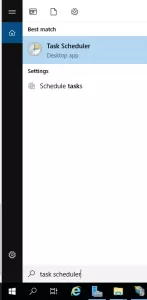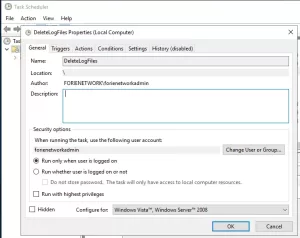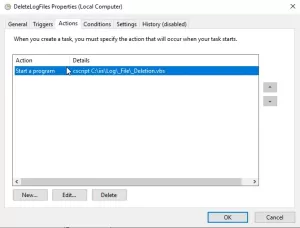Internet Information Services (IIS) is a component that provides web server services on Windows Server. IIS records log files to monitor website performance and detect issues. However, over time, these log files can unnecessarily consume disk space. In this guide, we’ll look at how to clean up IIS logs on Windows Server.
Step 1: Determine the Location of IIS Logs
1.Log in to the Windows Server.
2.Open the “Internet Information Services (IIS) Manager” by typing “IIS” in the Start menu.
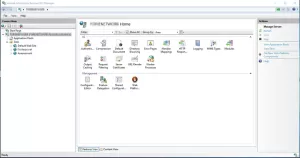
3.Expand the name of your server in the left-hand connection tree.
4.Under Sites, select the web site you want to clean up.
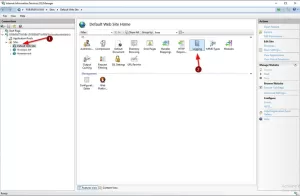
5.In the “IIS” section on the right side, find the “Logging” item. Here, you’ll see the directory where log files are stored. This is typically “C:\inetpub\logs\LogFiles” or a similar path.

Step 2: Cleaning Up Logs
1.Before deleting log files, you may want to back up their contents. You can copy the log files to another folder for this purpose.
2.Navigate to the “LogFiles” folder to clean up log files.

3.Here, you’ll see different folders named with date and time information (e.g., W3SVC1, W3SVC2, etc.). Choose the folder corresponding to the web site you’re interested in.
4.Select the log files within the folder, and press the Delete key to permanently remove the files.
Step 3: Creating a Scheduled Task (Optional)
If you want to clean up IIS logs periodically, you can use the Windows Task Scheduler. This way, you can automatically clean up logs at specified intervals.
- We’ll continue using the script we prepared earlier. Copy the script to a text editor, give it a name, and save it as a .vbs file.
sLogFolder = "c:\inetpub\logs\LogFiles"
iMaxAge = 30 'in days
' FileSystemObject oluşturuluyor
Set objFSO = CreateObject("Scripting.FileSystemObject")
' Log dosyalarının bulunduğu klasörün alt klasörleri taranıyor
set colFolder = objFSO.GetFolder(sLogFolder)
For Each colSubfolder in colFolder.SubFolders
' Alt klasör içindeki dosyaları tarıyor
Set objFolder = objFSO.GetFolder(colSubfolder.Path)
Set colFiles = objFolder.Files
For Each objFile in colFiles
' Dosyanın yaşını hesaplıyor
iFileAge = now - objFile.DateCreated
' Belirlediğiniz gün sınırını aşıyorsa silme işlemi yapılıyor
if iFileAge > (iMaxAge+1) then
objFSO.DeleteFile objFile, True ' Dosya siliniyor
end if
Next
Next3.Click on “Create Basic Task” to create a new scheduled task.
4.Görevinizi adlandırın ve açıklama ekleyin.
5.Choose “Start a Program” and specify a script or batch file to delete the logs.
6.You’ll see a summary of your task. Click “Finish” or “Create” to create the task.
By following these steps, you can clean up IIS logs at regular intervals on Windows Server. Be cautious when deleting logs and remember to create backups before deleting unnecessary files.



